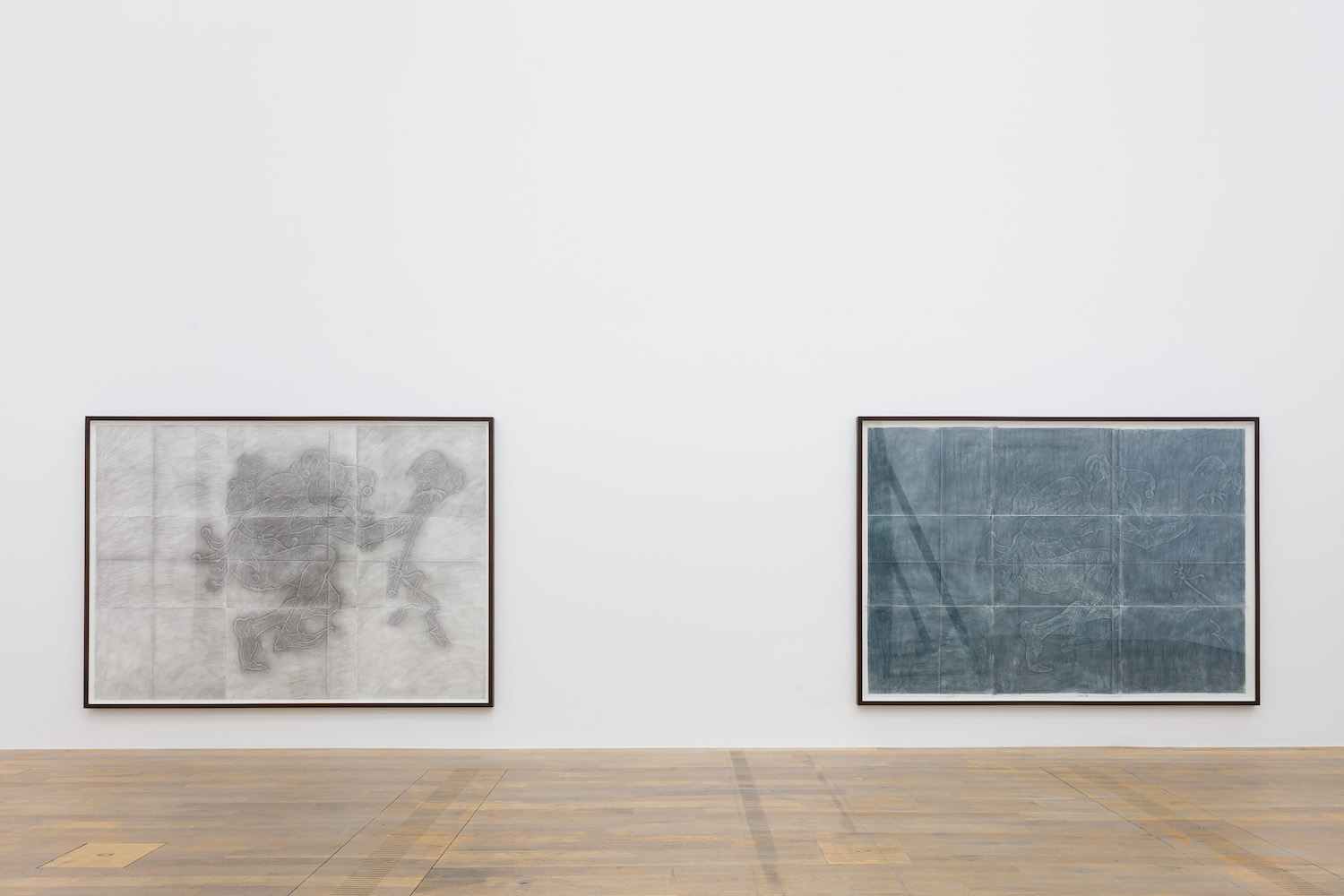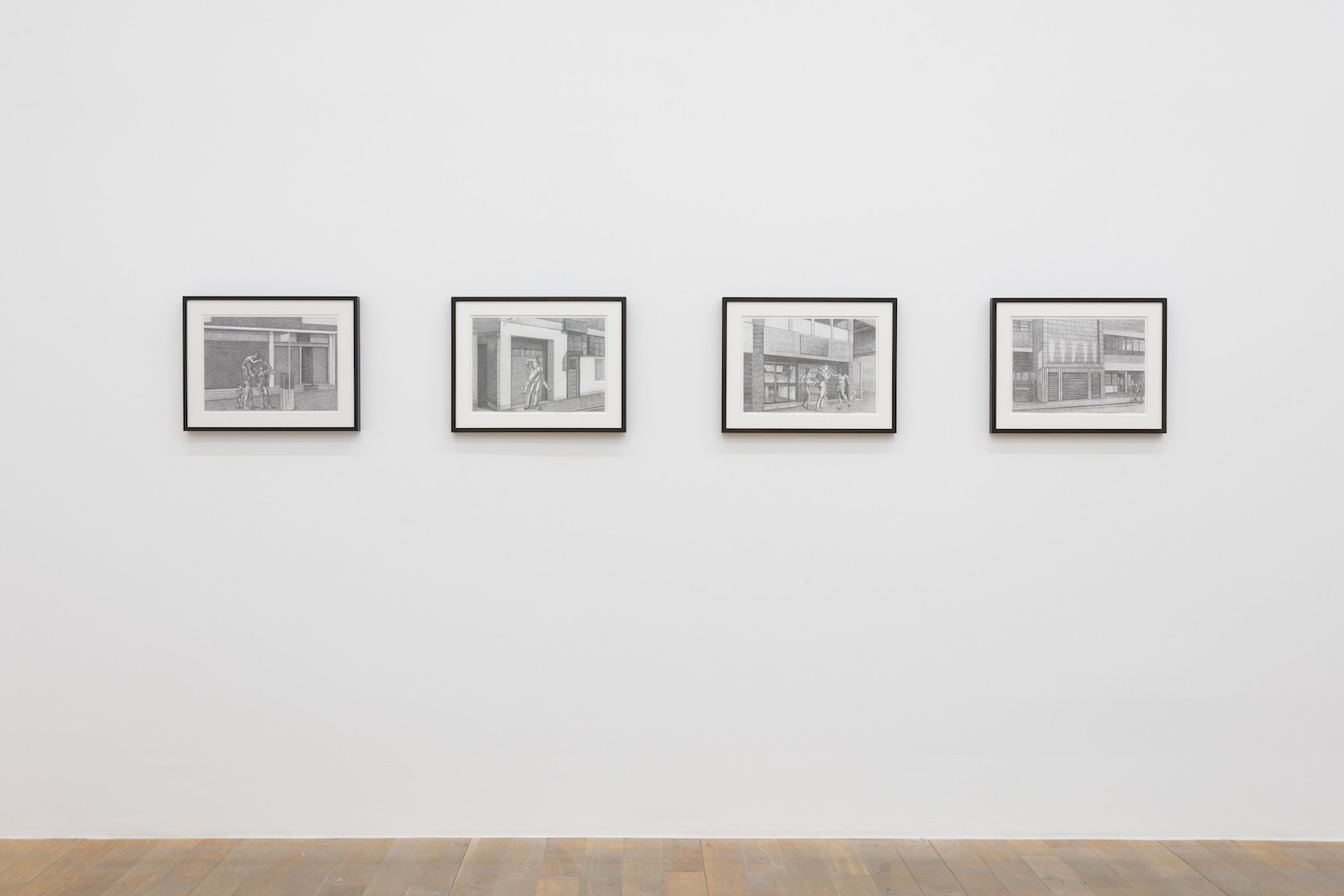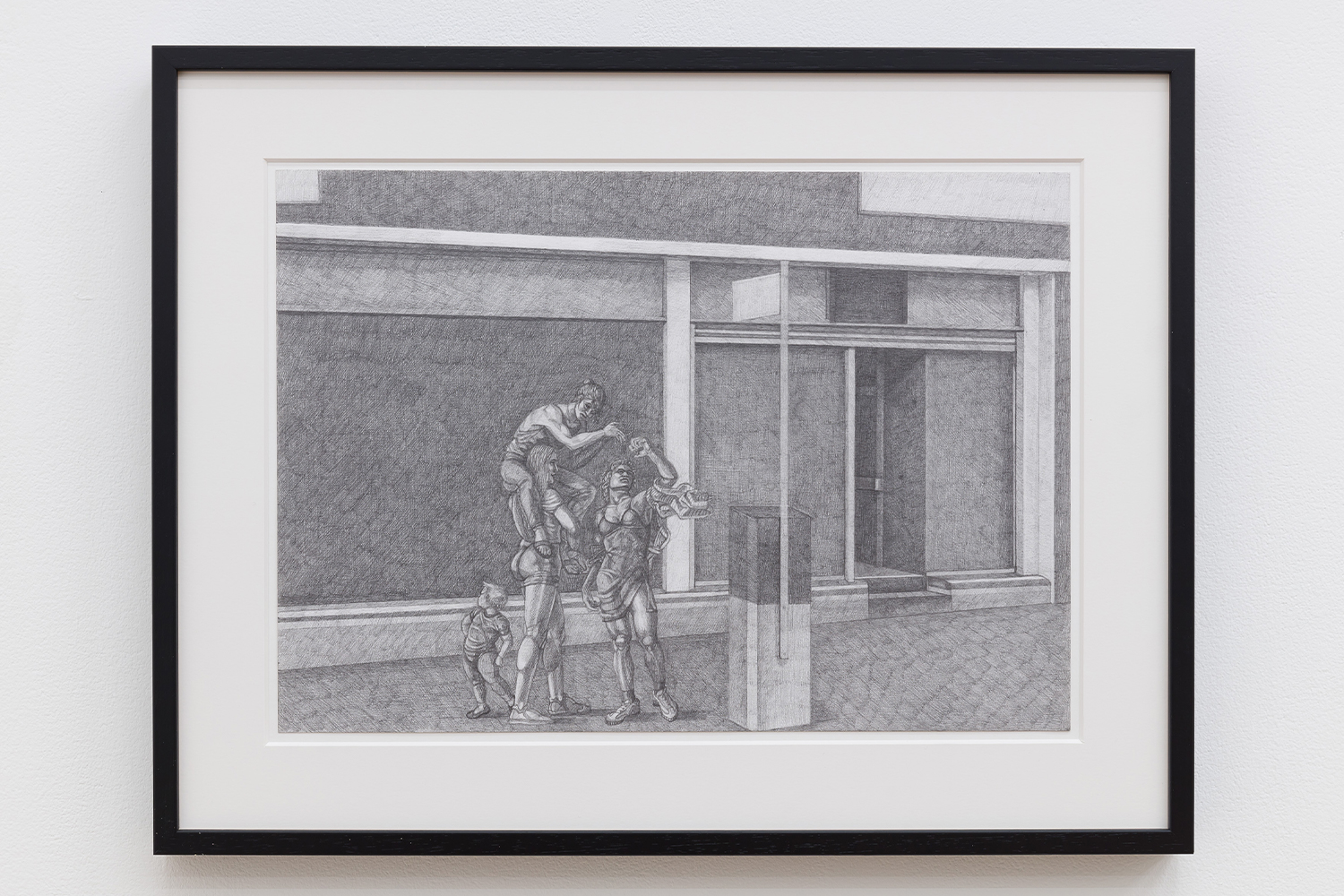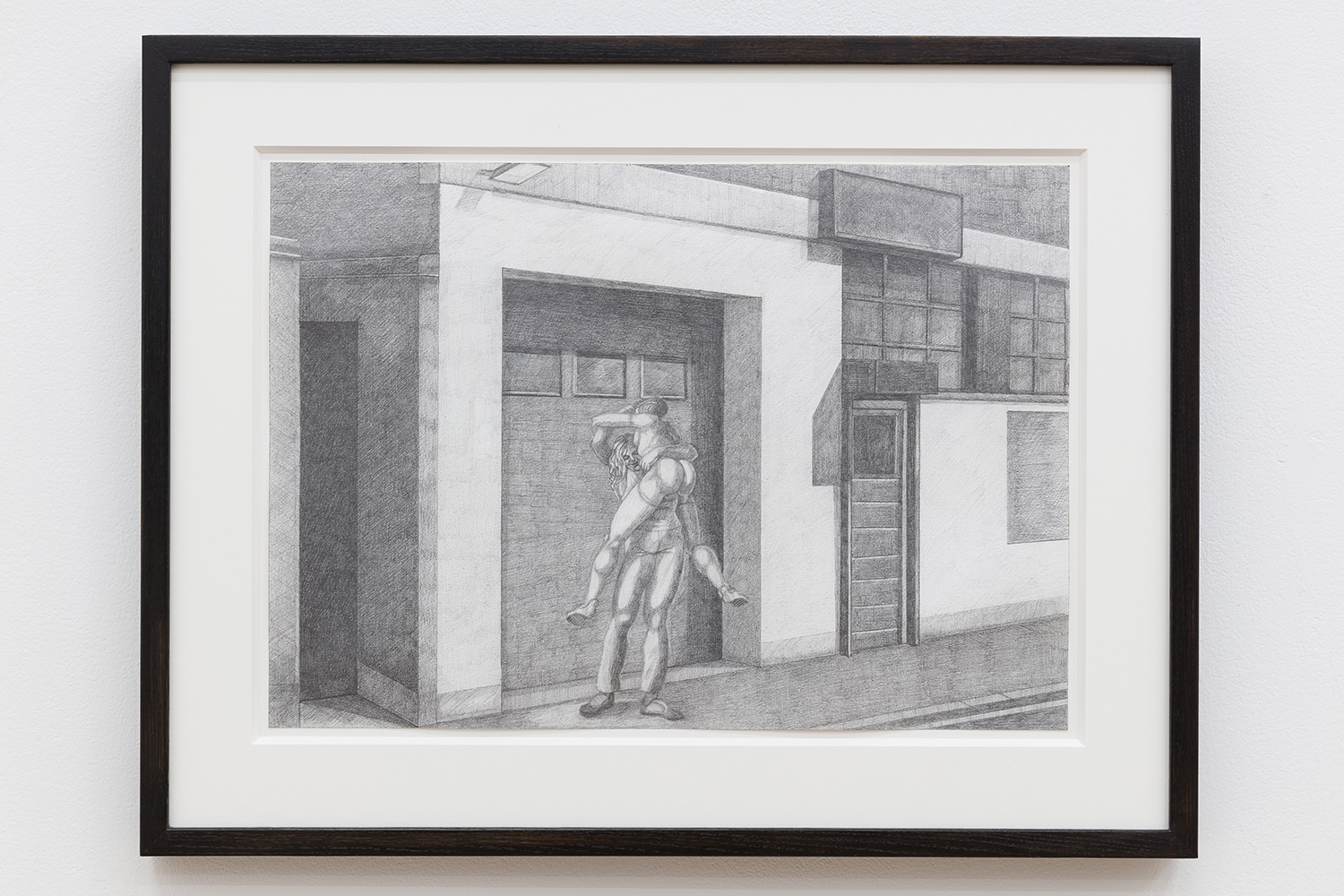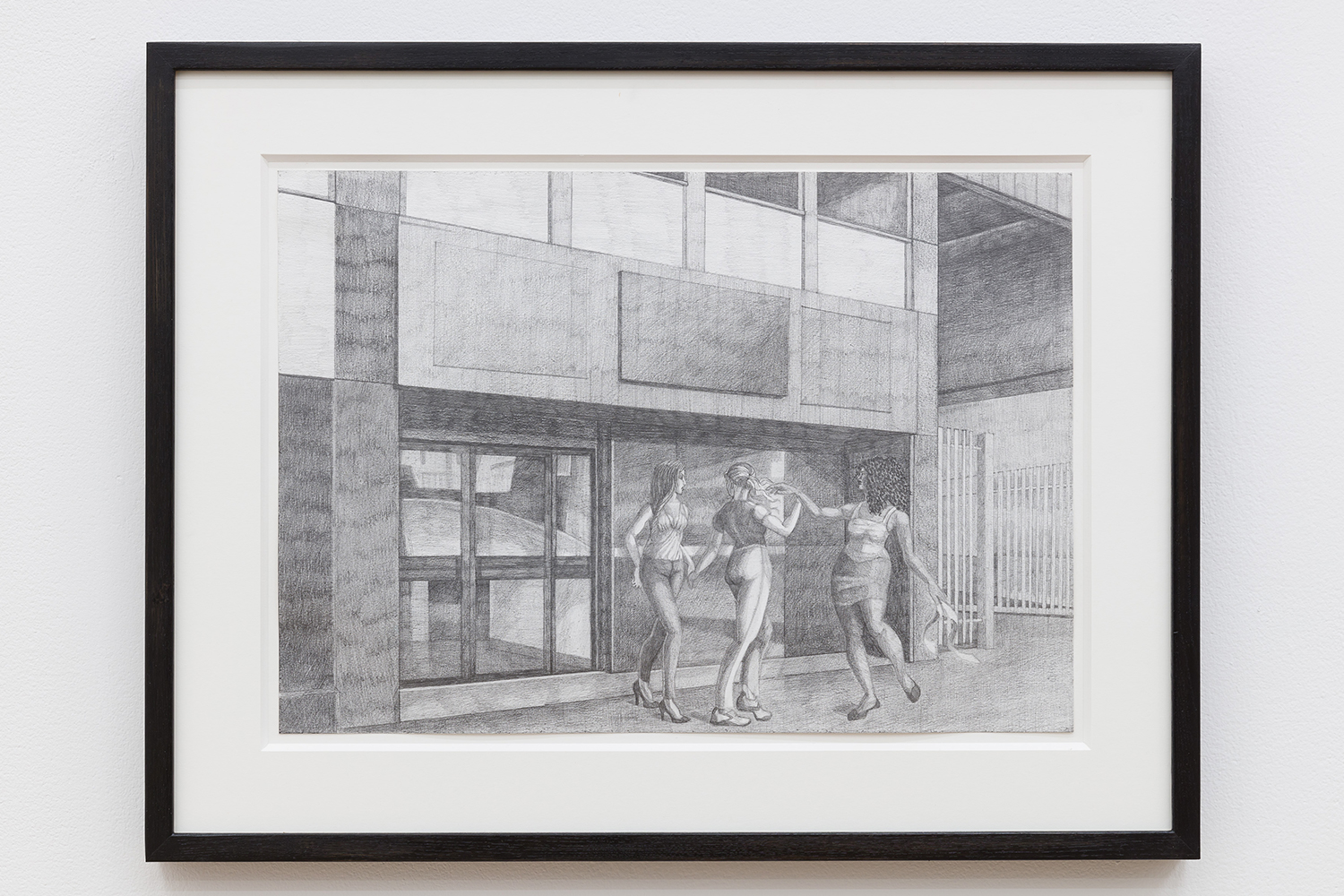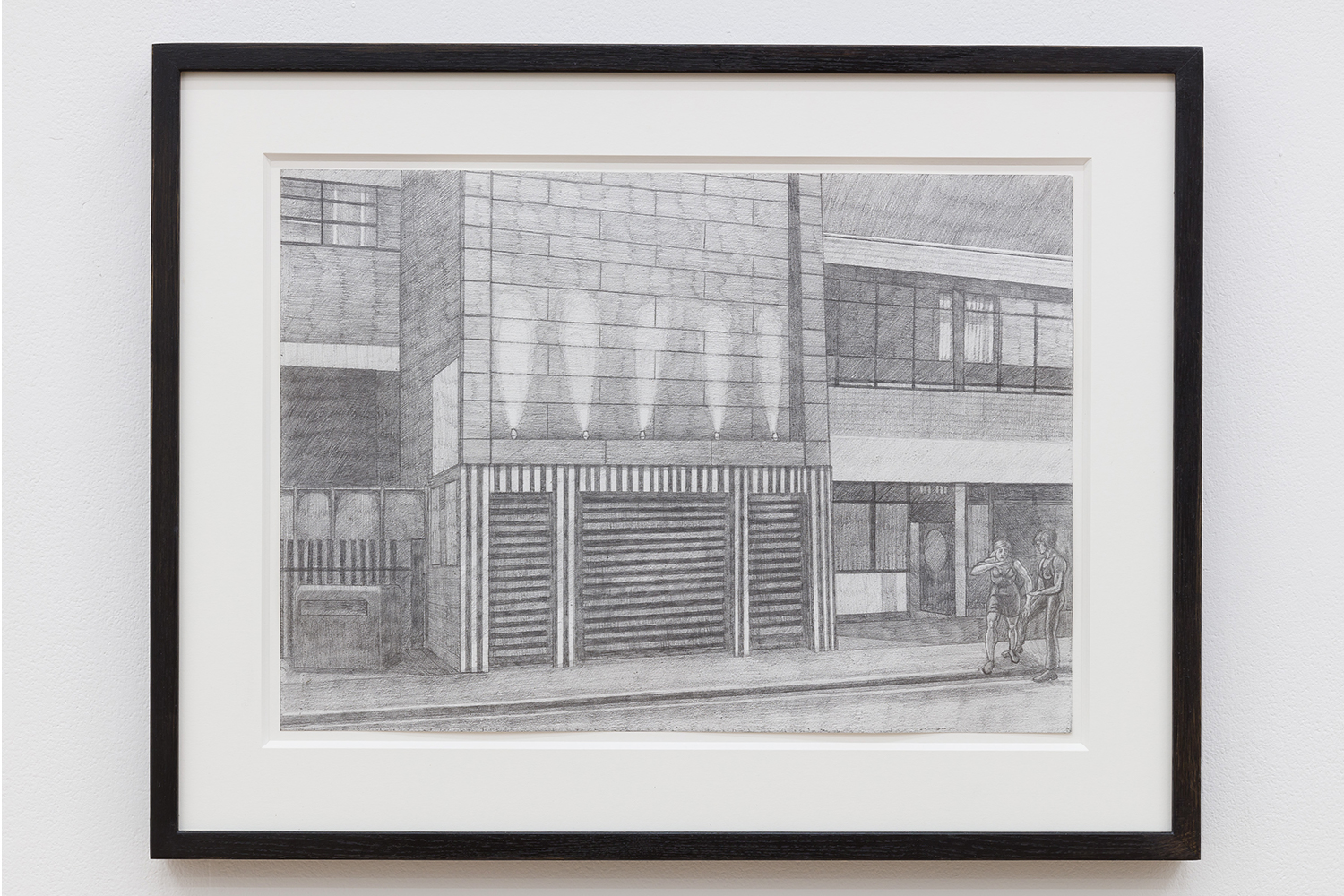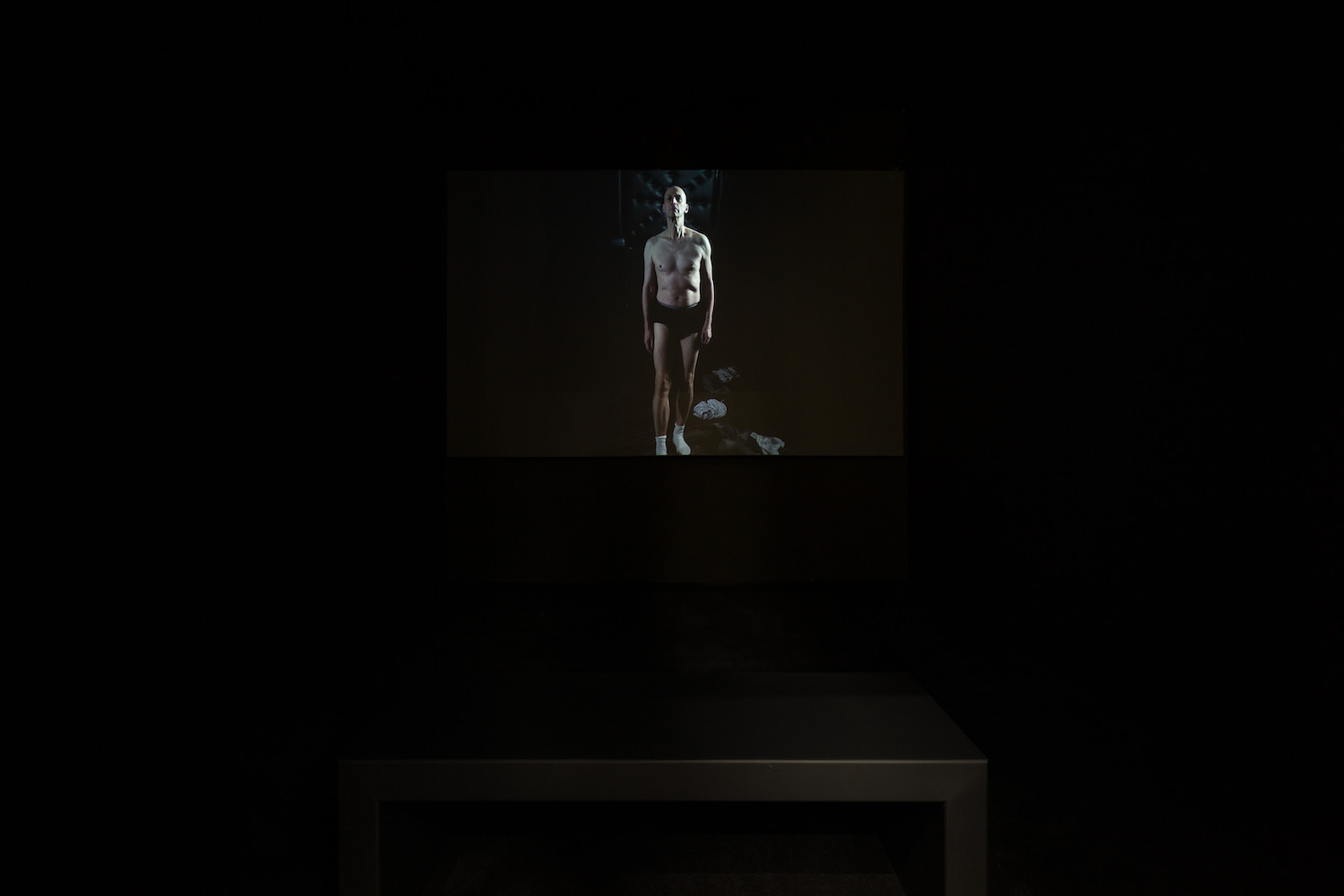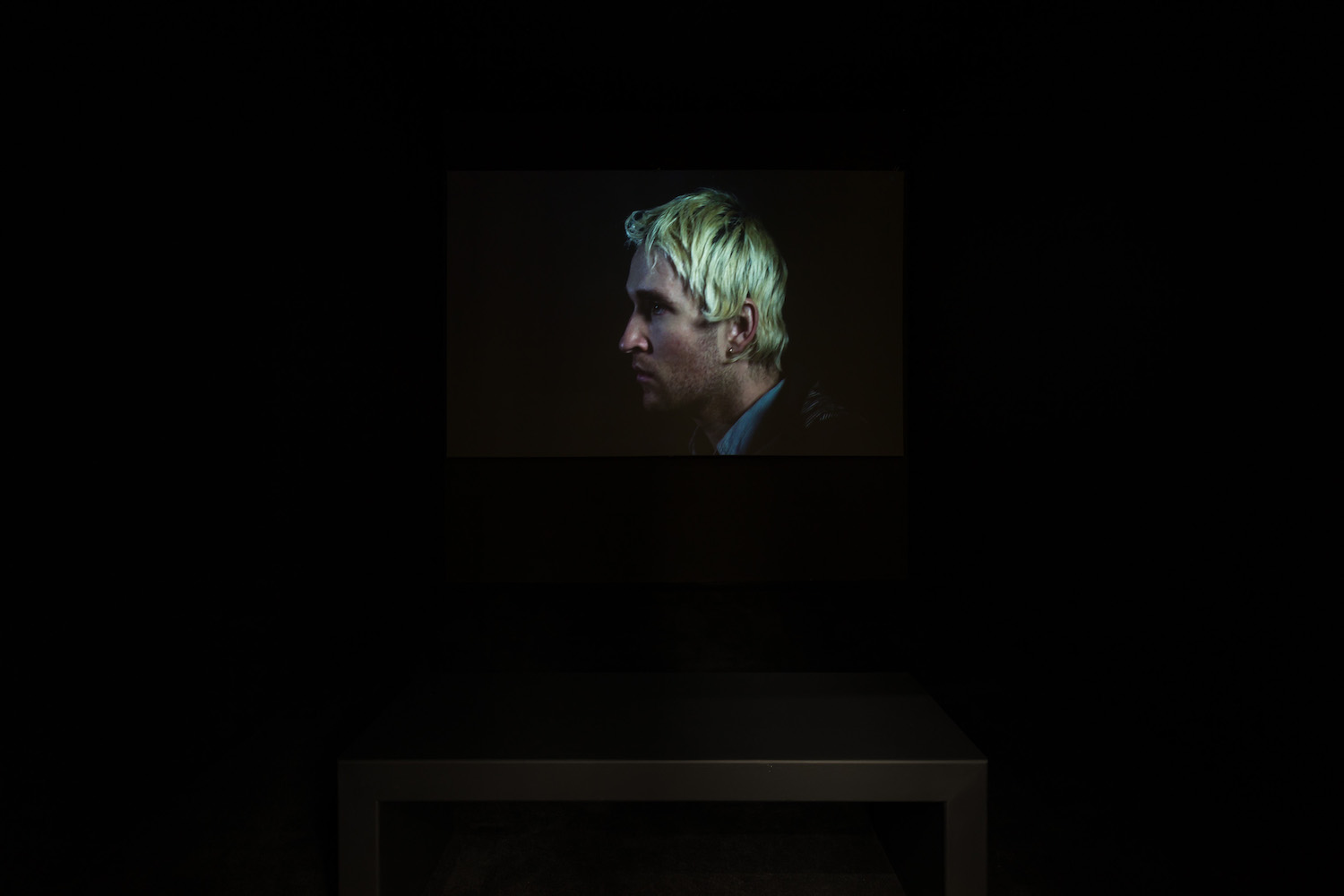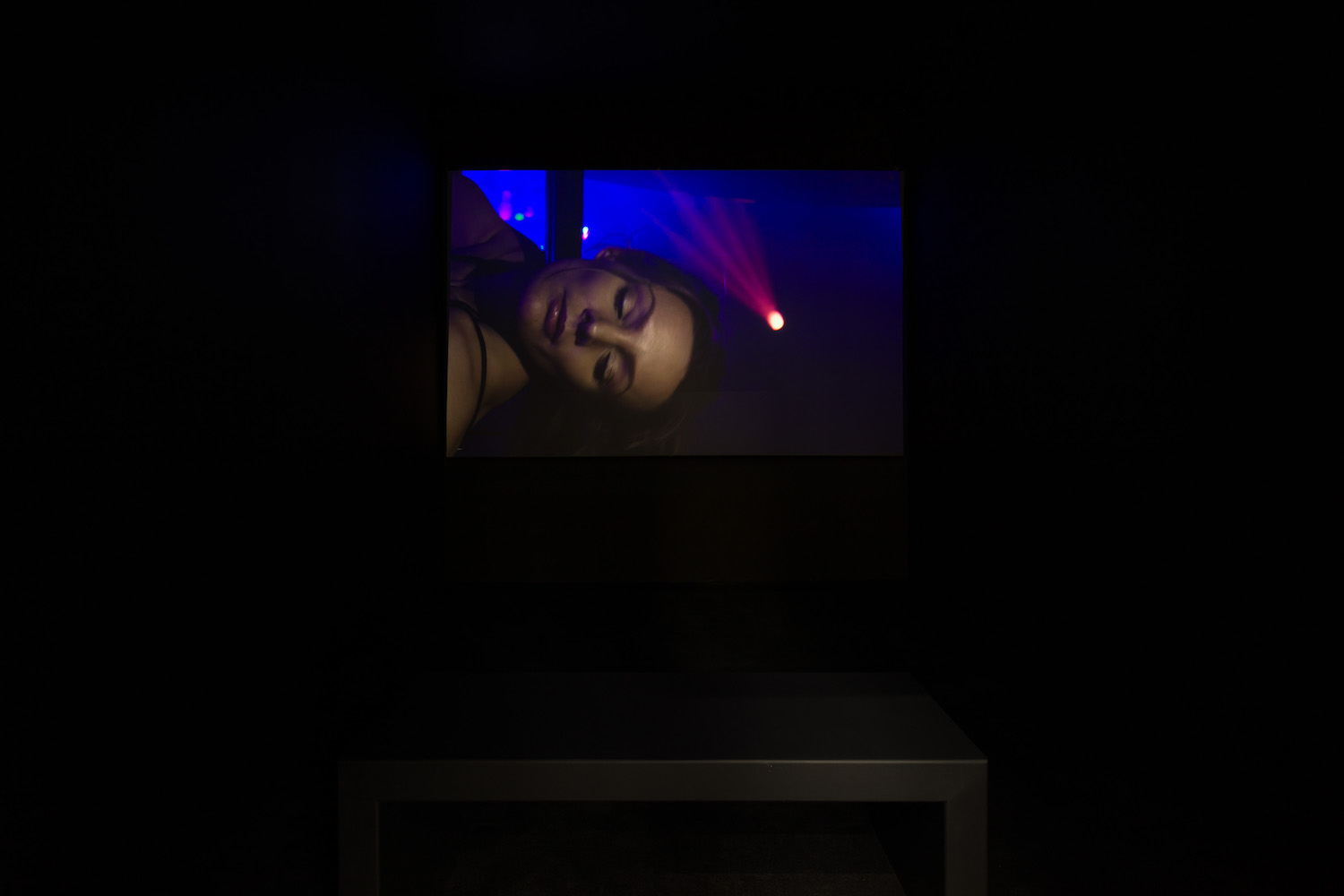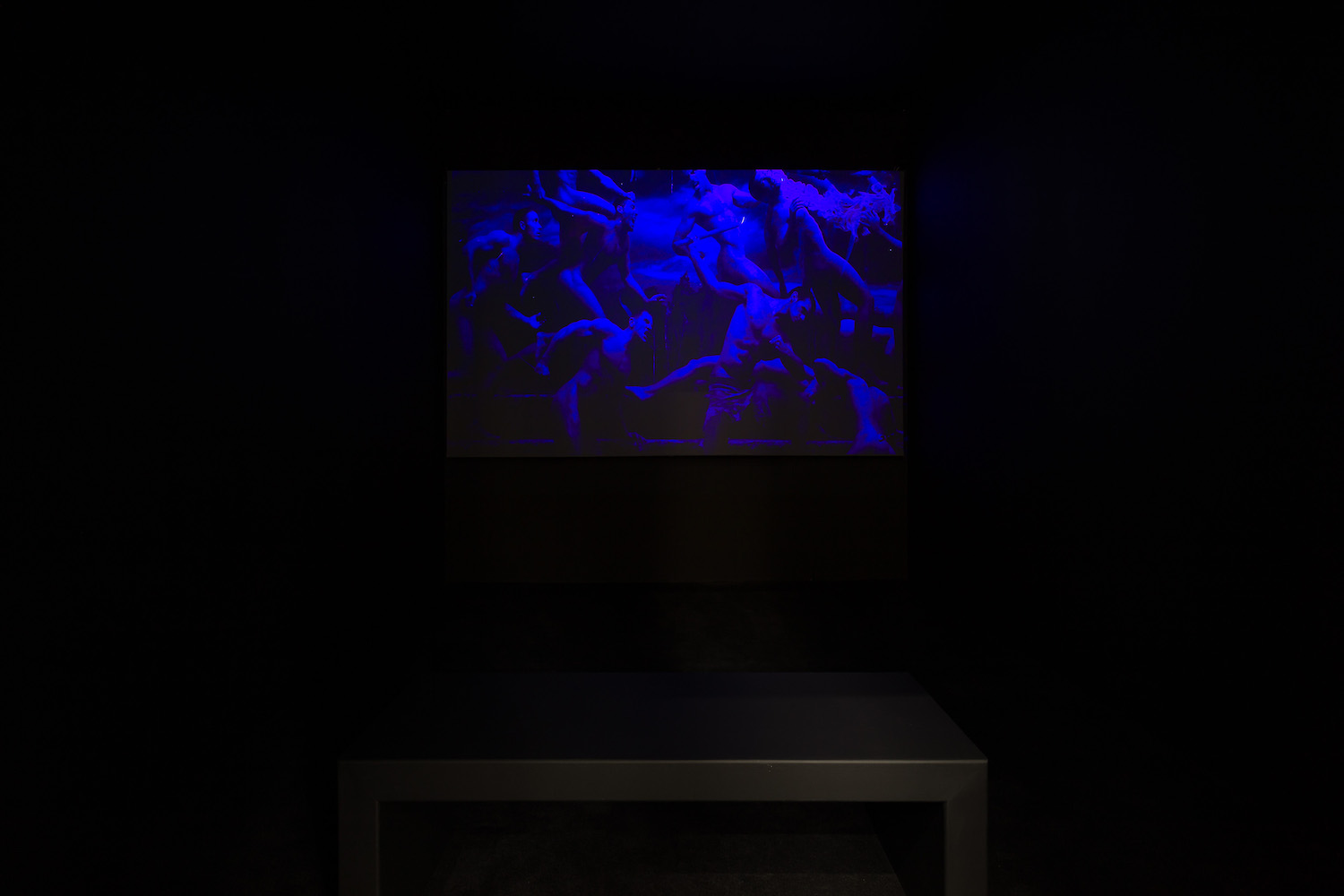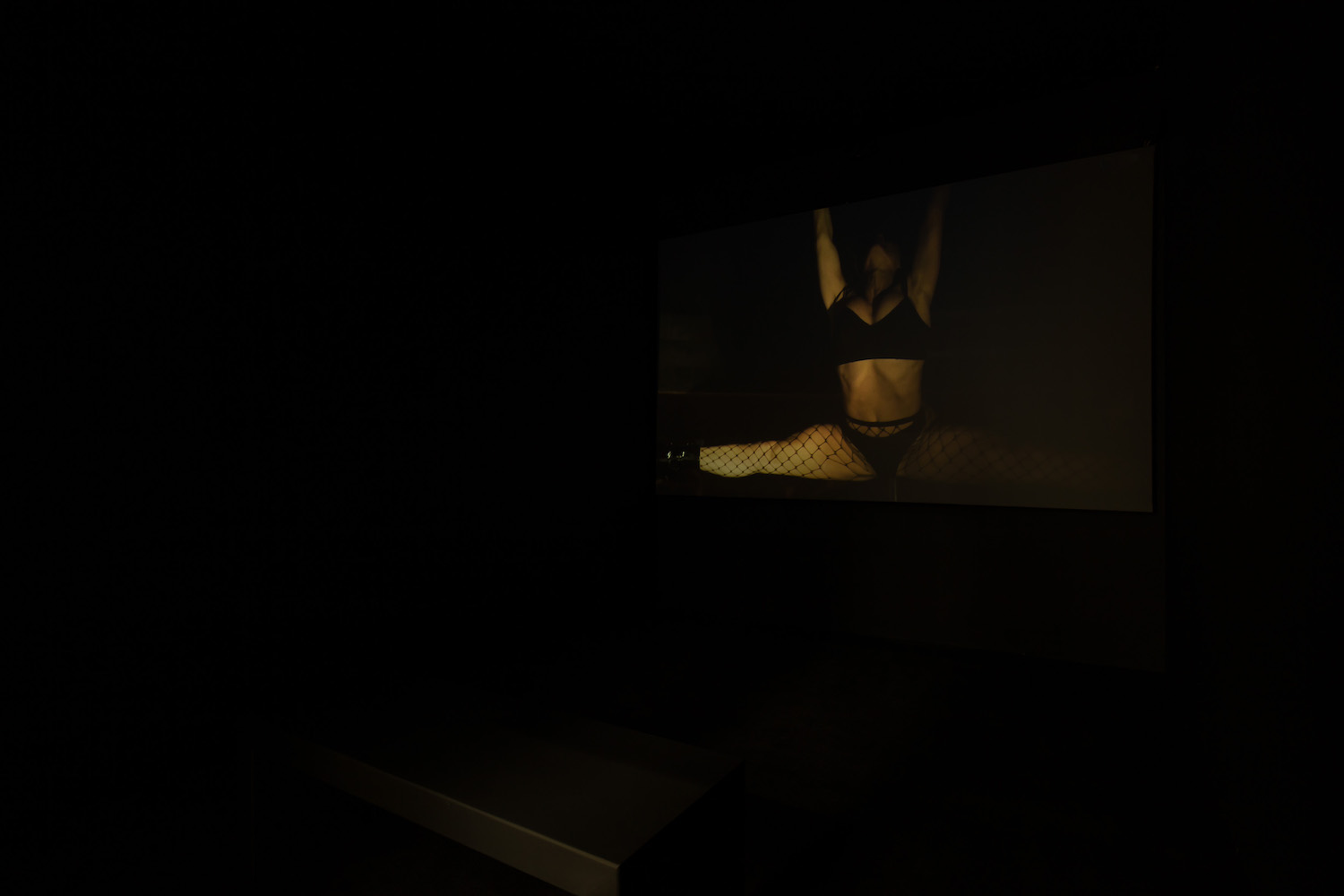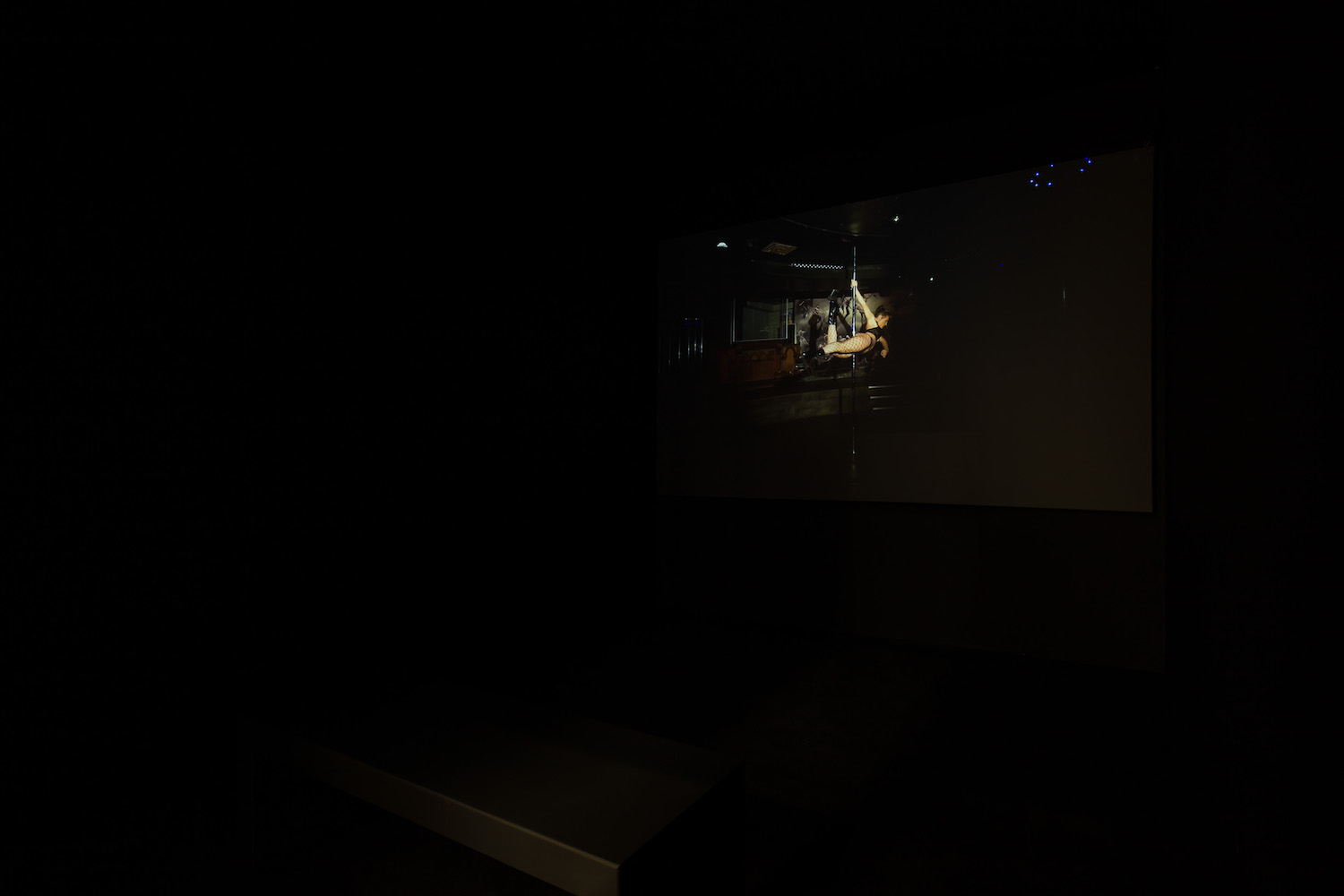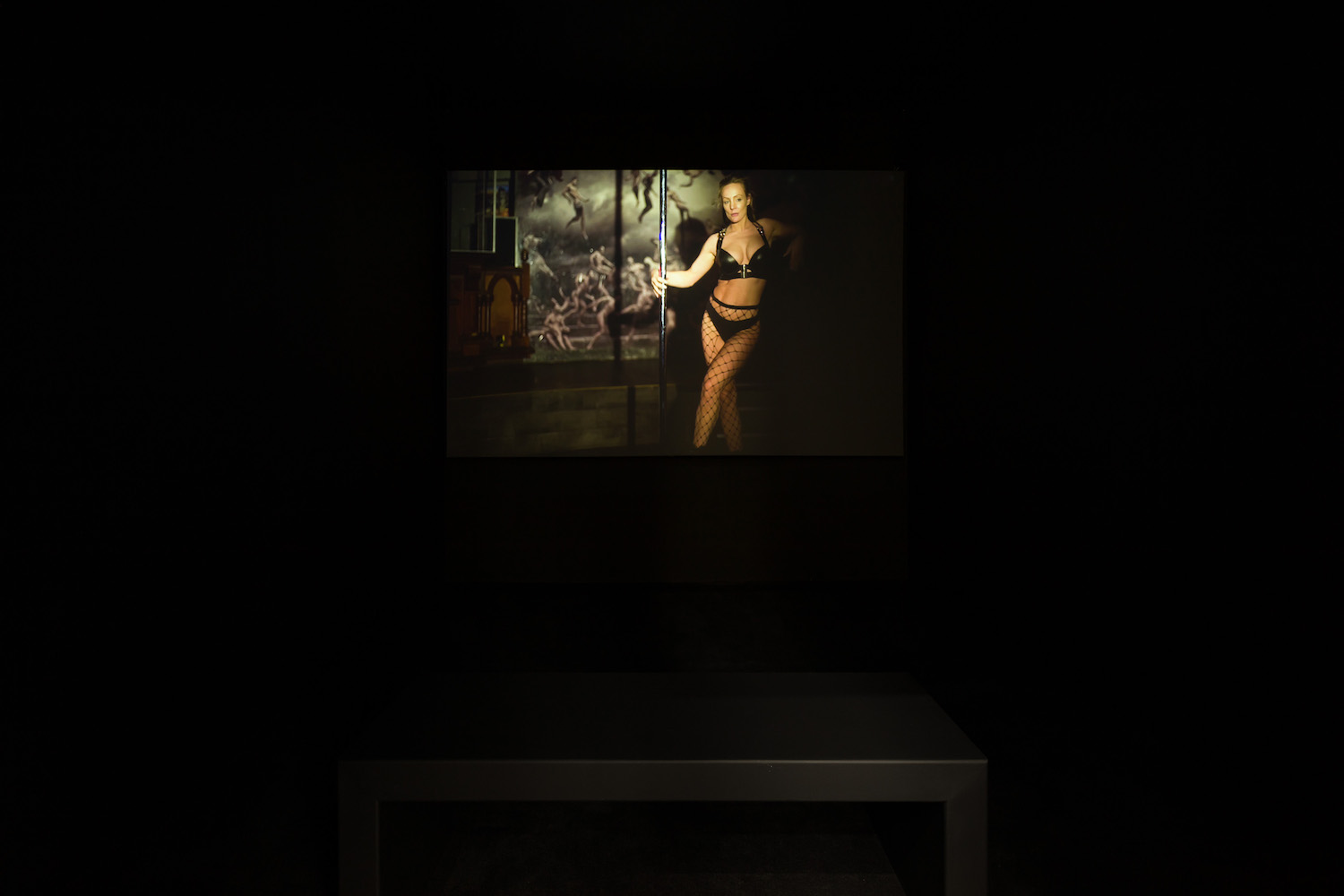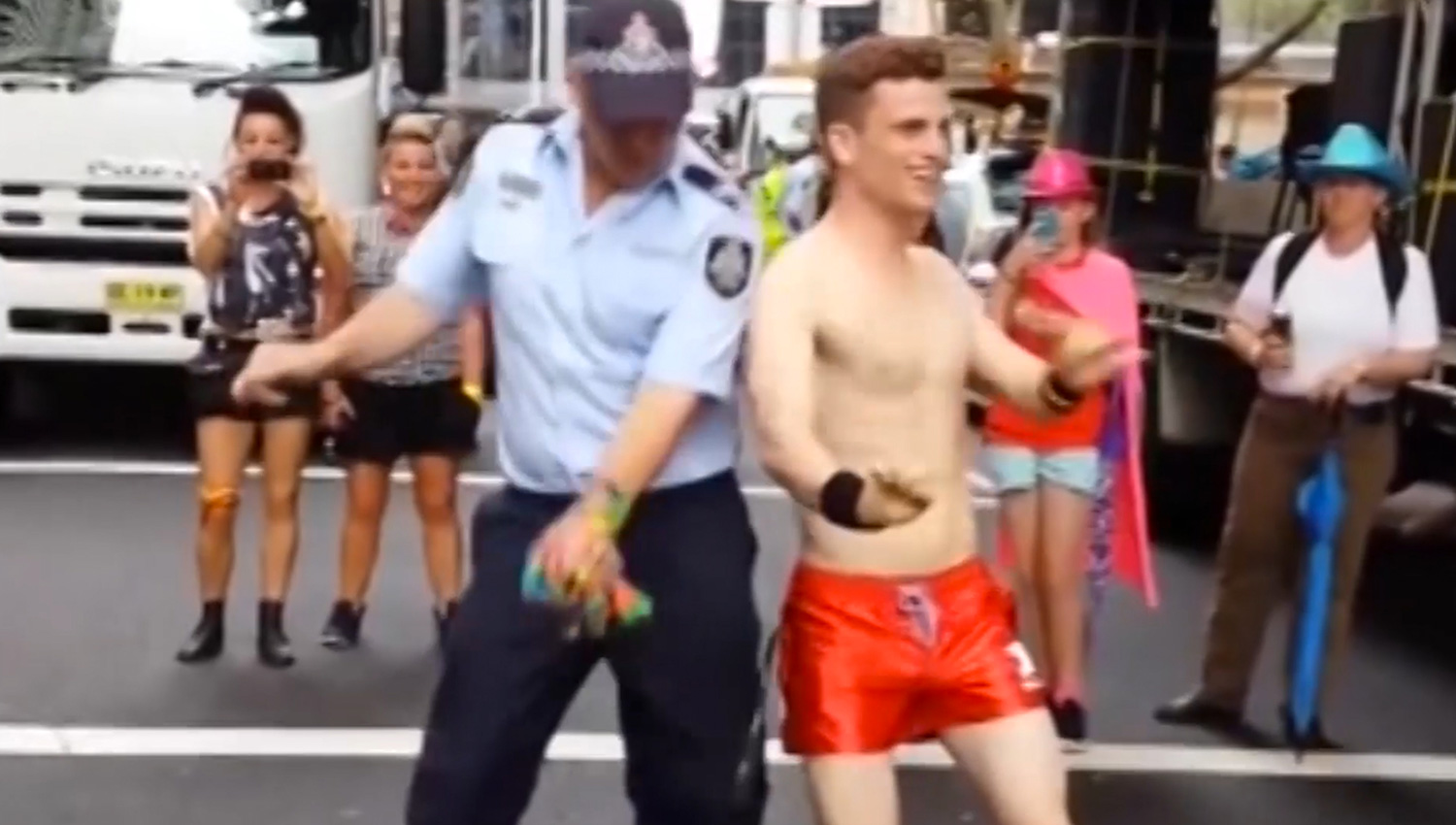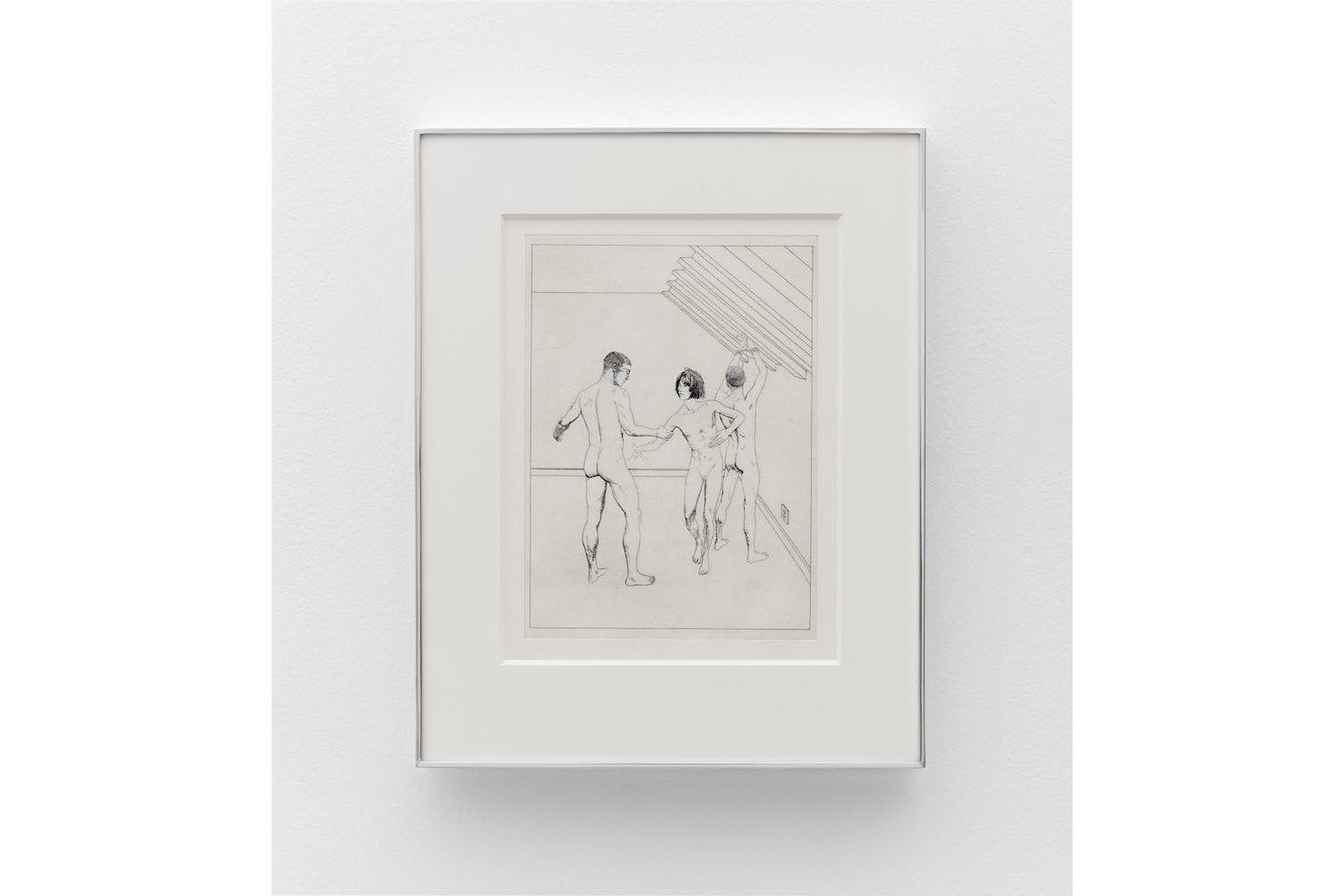The song “In My Room,” after which Hannah Quinlan and Rosie Hastings have titled their debut institutional show — a song notably given a proto-Lynchian cover treatment by Marc Almond in the early 1980s — rehearses a yearning both to be left alone and to be heard. The solitude rehearsed in its lyrics (I sit and stare at the wall / Thinking how lonesome I’ve grown / In my room) appears a peculiar match both for a duo who have so consistently trawled the public and the communal for inspiration — gay bars, ballrooms, cruising sites — and as a foil for celebrating and problematizing sites of intra-queer encounter. But these evocations have often explored the hauntings and grief they contain as much as any superficial capacity for liberation. Their signature work, UK Gay Bar Directory(2016), sets a mournful gaze on emptied-out gay venues, parallelizing the destructive forces of turbogentrification and Tory austerity at a moment of gay-assimilationist “successes.” In this sense it is a ghost movie, and the ghostly is a dominant affective register across much of the duo’s work.
With the works currently exhibited at MOSTYN in Llandudno, following a stunted pre-pandemic iteration at Focal Point Gallery, Quinlan and Hastings remain committed to probing the codes and architectures of gay male sociality — how they distort, what and whom they elide, and where, also, their potentialities might lie — while broadening and enriching their purview. Eschewing any broad exploration of the (ever-shifting, possibly meaningless) category of “queer culture,” the exhibition has a coolly suggestive air, offering various slants on how queer bodies interact experientially with their lived environments, shaped by the political whims of their times.
Alongside evocative graphite drawings — the artists’ increasingly adventurous formal toolkit gets richly showcased here — the exhibition’s twin centerpieces are Republic, a large fresco, and In My Room(both 2020), a seventeen-minute video-performance work. The former depicts an ambiguously contested site populated entirely by women. It has a primal intensity, its setting (though not its figures) decontextualized to near-abstraction — evoking in equal measure a street brawl, a club bathroom, and perhaps a kind of femme cruising zone. Like almost everything here it’s charged with a mysterious sense of queer communion. While Republic’s form speaks to a moral drive, its liveness and drama attest to the possibility of collective action, even jouissance, as well as threat. At MOSTYN Republicappears to levitate in the middle of its room, contributing to its near-religious air of immanence.
Shot in Birmingham and Southend-on-Sea, In My Roomis conversely a head-on exploration of embodied sexuality in (dead or dying) public places. Made with a diverse cohort of collaborators, like Republicit is high fantasy, speaking to either possibility or deterioration or both. Both works propulsively suggest ways in which the movement of bodies among each other — in dance, sex, physical conflict — are dictated by their built environments, their politicized publics, those things that make a sense of queer possible, and what might arise in their absence.
“In My Room,” video and exhibition, is a satisfyingly open-ended interrogation of how living breathing thinking bodies, assembled in a given built environment, manage to find harmony, or not. The works question how power moves from environment into body into mind and back again, how a public becomes itself, how queers find room for becoming otherwise, for being together, for being apart. All alone / All alone / In my room / All alone.


